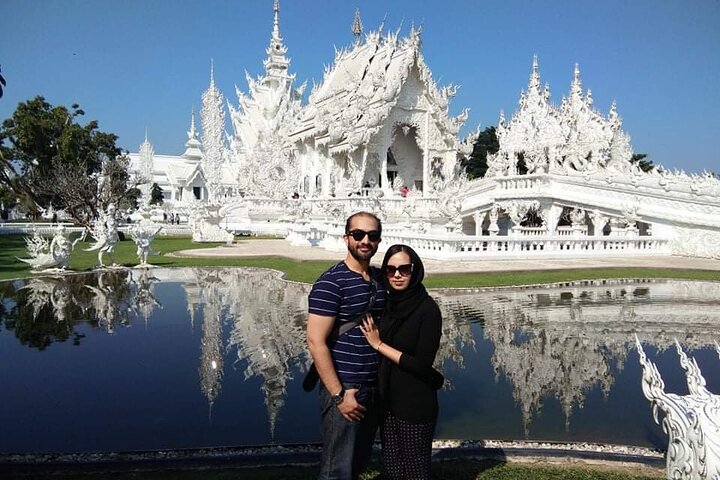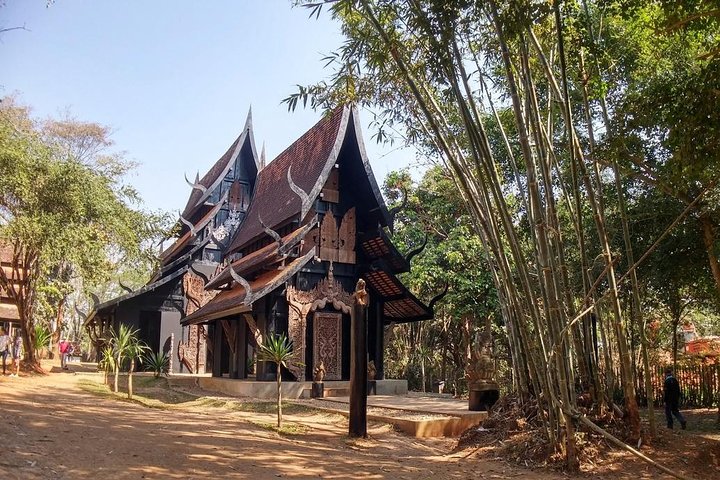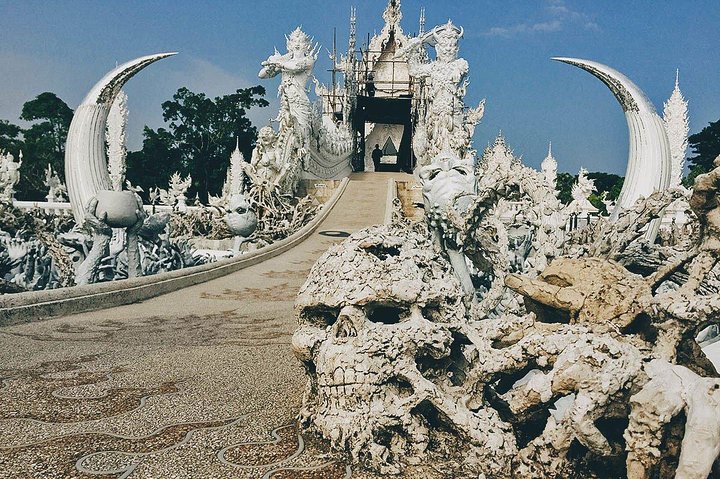Exploring Chiang Rai’s Spiritual Wonders: A Day of Temples and Traditions
Embark on a spiritual journey through Chiang Rai’s stunning temples, where tradition meets modernity. Discover the White Temple’s ethereal beauty, the Blue Temple’s wisdom, and the grandeur of the Guan Yin statue, all while savoring local flavors.
A Journey Through Time: The Temples of Chiang Rai
The allure of Chiang Rai’s temples had long been on my radar, and the opportunity to explore them on a private day trip from Chiang Mai was too enticing to pass up. As someone who has spent years immersed in the rich tapestry of Asian culture, I was eager to delve into the spiritual and architectural wonders that this region promised.
The White Temple: A Surreal Masterpiece
Our journey began at the break of dawn, with our guide, M, greeting us at our hotel in Chiang Mai. His punctuality and courteous demeanor set the tone for the day. The drive to Chiang Rai, though lengthy, was punctuated by a refreshing stop at the Taweesin Hot Spring, where the warmth of the water mirrored the hospitality of the locals.
Our first major stop was Wat Rong Khun, the White Temple. This modern architectural marvel, completed in 1997, is a testament to the fusion of traditional Thai art with contemporary vision. The temple’s pristine white facade, adorned with thousands of mirrored glass pieces, glistened under the sun, creating an almost ethereal atmosphere. As I wandered through its intricate designs, I couldn’t help but reflect on the temple’s representation of paradise, a theme that resonates deeply with the Buddhist pursuit of enlightenment.
The Blue Temple: A Dive into Wisdom
Next on our itinerary was the Blue Temple, or Rong Suea Ten. Completed in 2016, this temple’s striking blue hue symbolizes the wisdom and purity of the Buddha. The intricate patterns and designs within the temple narrate the path to enlightenment, a journey that is both enlightening and, at times, dark. The contrast of light and shadow within the temple’s artwork reminded me of the duality present in many Asian philosophies, where balance is key.
Our lunch break was a delightful immersion into local cuisine. At a quaint Thai restaurant, we dined on noodles with beef and chicken blood jelly, a dish that was both novel and surprisingly delicious. Sharing a meal with locals, savoring the authentic flavors, was a reminder of the simple joys that travel brings.
The Guan Yin Statue and Rainbow Temple: A Grand Finale
The afternoon was dedicated to the Wat Huay Pla Kang temple and the towering Guan Yin statue. Standing 25 stories high, the statue offers panoramic views of the surrounding landscape. The ascent via the lift was a small price to pay for the breathtaking vistas and the intricate designs that adorned the upper levels of the statue.
Our final destination was Wat Sang Kaew, the Rainbow Temple. Despite the heavy rain that greeted us, the temple’s vibrant colors and unique statues shone through the downpour. The rain, rather than dampening our spirits, added a mystical quality to the experience, as if the heavens themselves were blessing our journey.
This temple tour was more than just a sightseeing excursion; it was a journey into the heart of Thai spirituality and artistry. Each temple, with its unique story and design, offered a glimpse into the rich cultural heritage of Chiang Rai. As I reflected on the day’s experiences, I was reminded of the profound beauty that lies in the intersection of tradition and modernity, a theme that continues to inspire my travels across Asia.



















































